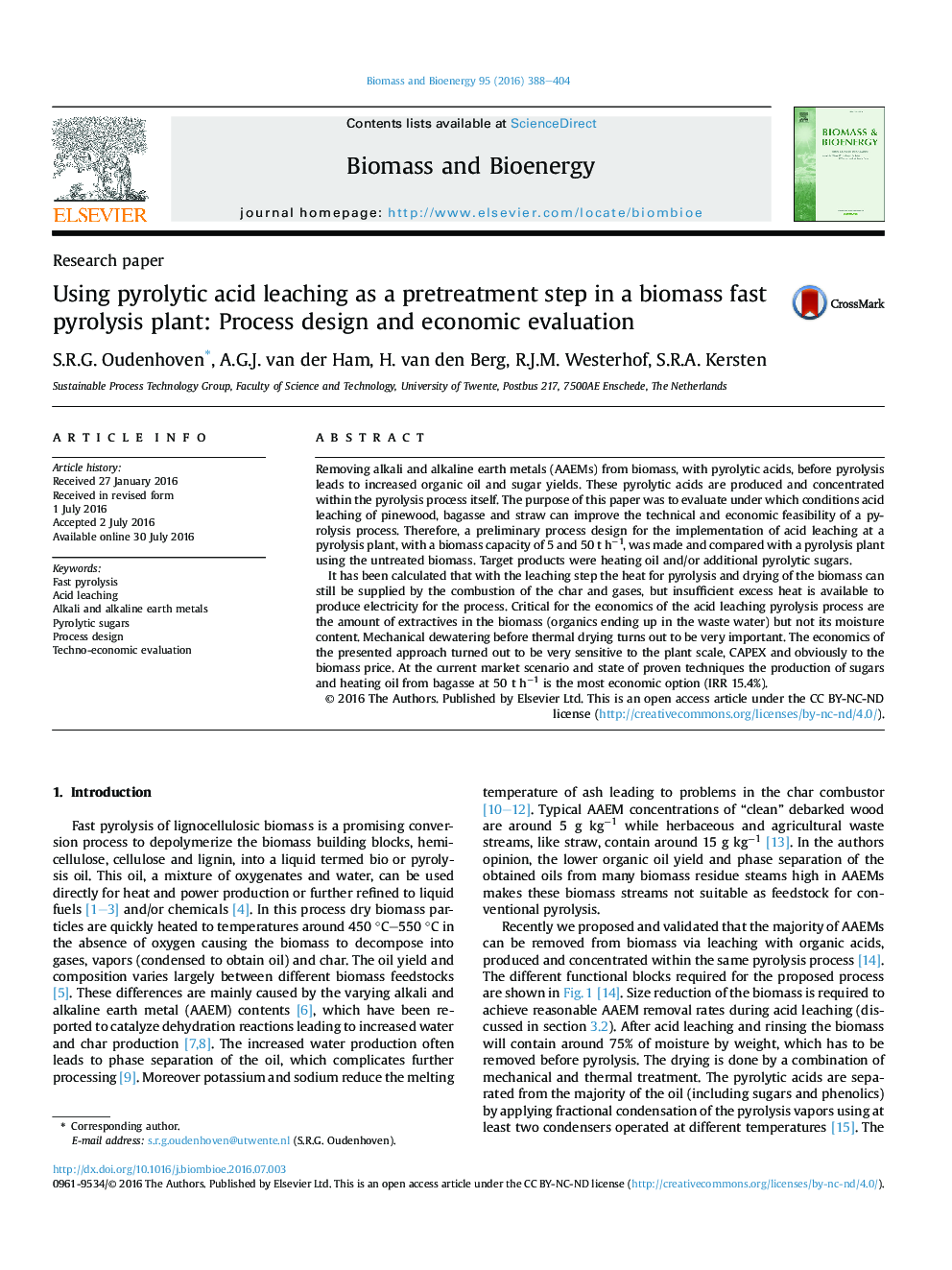| کد مقاله | کد نشریه | سال انتشار | مقاله انگلیسی | نسخه تمام متن |
|---|---|---|---|---|
| 4996389 | 1459798 | 2016 | 17 صفحه PDF | دانلود رایگان |
- Leaching biomass with pyrolytic acids before pyrolysis is economically feasible.
- Sugars can be produced with a yield of 0.24 kg kgâ1 next to heating oil (0.3 kg kgâ1).
- No need for additional thermal energy despite processing large water streams.
- Mechanical dewatering is a key operation in the leaching process.
- Handling the organics and ash dissolved in the waste water remains a challenge.
Removing alkali and alkaline earth metals (AAEMs) from biomass, with pyrolytic acids, before pyrolysis leads to increased organic oil and sugar yields. These pyrolytic acids are produced and concentrated within the pyrolysis process itself. The purpose of this paper was to evaluate under which conditions acid leaching of pinewood, bagasse and straw can improve the technical and economic feasibility of a pyrolysis process. Therefore, a preliminary process design for the implementation of acid leaching at a pyrolysis plant, with a biomass capacity of 5 and 50 t hâ1, was made and compared with a pyrolysis plant using the untreated biomass. Target products were heating oil and/or additional pyrolytic sugars.It has been calculated that with the leaching step the heat for pyrolysis and drying of the biomass can still be supplied by the combustion of the char and gases, but insufficient excess heat is available to produce electricity for the process. Critical for the economics of the acid leaching pyrolysis process are the amount of extractives in the biomass (organics ending up in the waste water) but not its moisture content. Mechanical dewatering before thermal drying turns out to be very important. The economics of the presented approach turned out to be very sensitive to the plant scale, CAPEX and obviously to the biomass price. At the current market scenario and state of proven techniques the production of sugars and heating oil from bagasse at 50 t hâ1 is the most economic option (IRR 15.4%).
Journal: Biomass and Bioenergy - Volume 95, December 2016, Pages 388-404
